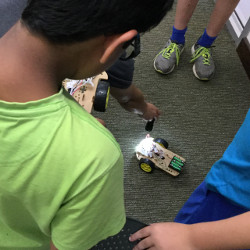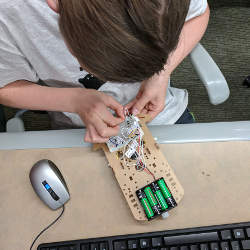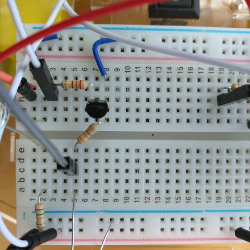




How does the photoresistor control the transistor?
The brighter the light, the less the resistance. If resistance is low, the transistor turns off and the motor spins. If the resistance is too high, the motor stop spinning.
Understanding the Genius Light
I learned that you need to connect the positive to positive and negative to negative. You also need the photo resister to make them sensitive to light.
Humans operate in the analog world
Humans can use their voices to produce an infinite amount of different volumes, or use our ears to hear an infinite number of loudnesses.
How does the photoresistor control the transistor?
The brighter the light, the less the resistance. If resistance is low, the transistor turns off and the motor spins. If the resistance is too high, the motor stop spinning.